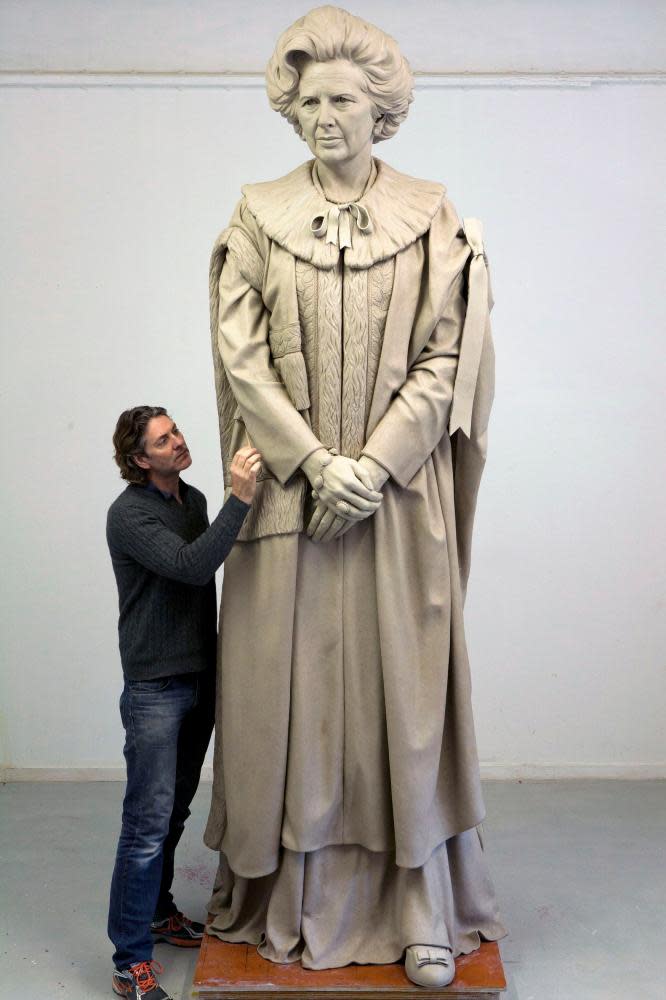Westminster council rejects Margaret Thatcher statue plans

Councillors have rejected a proposal for a statue of Margaret Thatcher on Parliament Square in central London.
Westminster council turned down a plan last July for a bronze likeness of the former prime minister, measuring one-and-a-half times lifesize and dressed in state robes. The applicants wanted the statue to be looking towards parliament, but it was rejected, partly due to fears about possible vandalism. It was also felt that it could become a magnet for protesters
The organisers submitted a revised proposal that would place the statue on a four-metre-high plinth designed to be hard to climb and featuring integral scaffolding sockets so hoardings could be easily put around it during demonstrations.
The statue would be created by Douglas Jennings, a sculptor described by council planning officials as having “an international reputation”. However, council officials again recommended the committee turned down the plan, for a series of reasons.

The first was described as “monument saturation” around parts of Westminster, given what the council called unprecedented recent demand for statues and other monuments in recent years.
The planned Thatcher statue, the cost of which has been met by private donations, would stand between memorials to George Canning and Abraham Lincoln, and would be so close to the site for another proposed statue, of the suffragette Emmeline Pankhurst, that both could not be installed.
The officers’ briefing paper says the crowding meant Westminster operates a planning rule that decrees that people must have been dead for at least a decade before a statue of them can be erected “to allow partisan passions to cool and enable sober reflection”. Thatcher died in 2013, although this is not thought to have been a factor in the decision.
Other barriers to building the statue noted by the officials included the lack of any support from the Thatcher family. Documents in the planning application note the organisers had written to her children, Carol and Mark, but received no reply.
It also pointed out that showing Thatcher in state robes “does not reflect her role as prime minister, for which she is being memorialised”, and that there was already a statue of her in the Commons, which members of the public can visit.
Westminster council’s chairman of planning, councillor Richard Beddoe, said: “The lack of family support and the committee’s concerns around the design of the proposed statue were the key determining factors in turning down this application.
“As our country’s first female prime minister, Baroness Thatcher is a hugely significant figure in British history and in principle the council is in favour of a statue commemorating her in Parliament Square, but it must be the right statue, with an appropriate design and the support of her family. The so called ‘10 year rule’ was not a reason for refusal in this case.”

 Yahoo News
Yahoo News 
